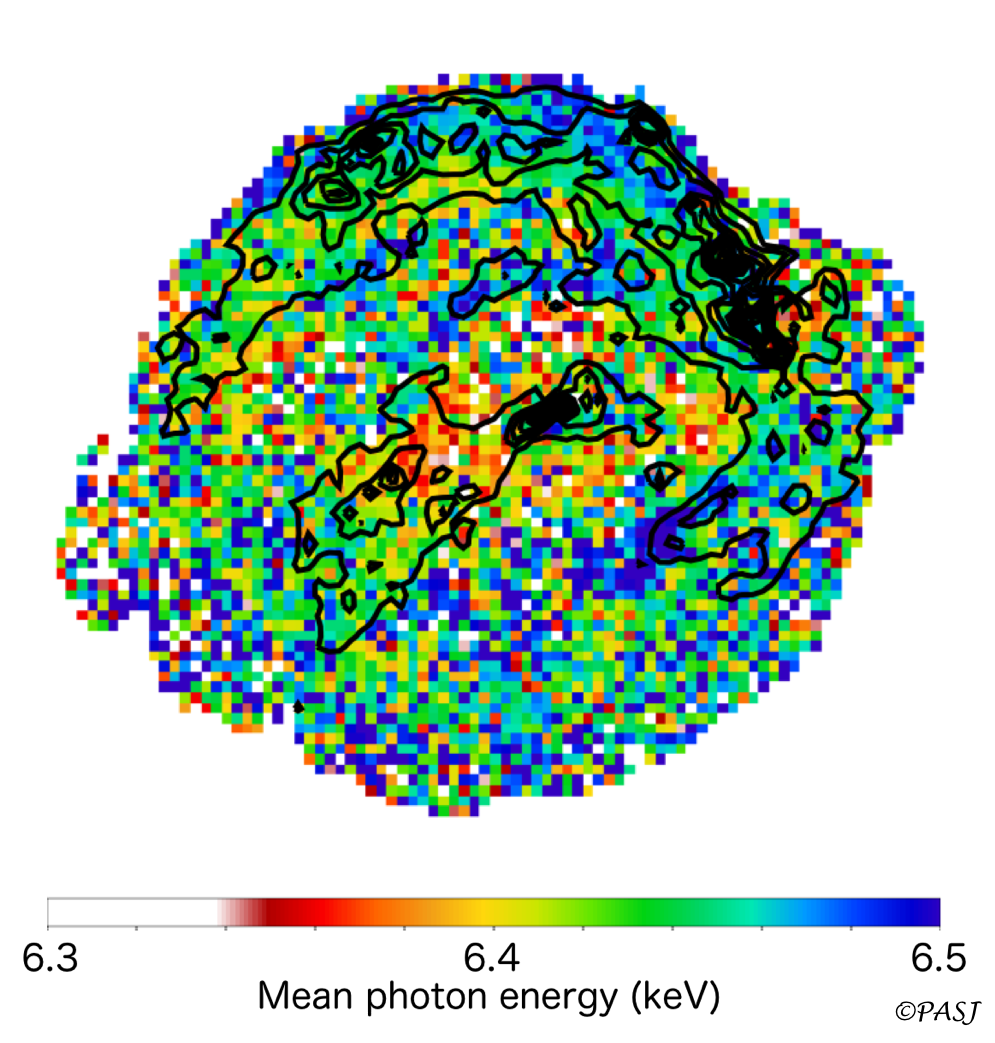Our paper titled “Asymmetric Expansion of the Fe ejecta in Kepler’s Supernova Remnant” has been accepted for publication in PASJ.
arXiv: https://arxiv.org/abs/1807.04029
The ejecta kinematics of supernova remnants (SNRs) is one of crucial clues to understand the explosion mechanism of type Ia supernovae (SNe). In particular, the kinematic asymmetry of iron-peak elements provides the key to understanding physical processes taking place in the core of the exploding white dwarfs (WDs) although it has been poorly understood by observations. Kasuga et al. shows for the first time the asymmetric expansion structure in the line-of-sight direction of Fe ejecta in Kepler’s SNR revealed by spectral and imaging analysis using the Chandra archival data. We found that the K alpha line centroid energy and line width is relatively lower and narrower around the center of the remnant, which implies that the majority of the Fe ejecta in the central region is red-shifted. At the outer regions, we identify bright blue-shifted structures as it might have been ejected as high velocity dense clumps. As the origin of the asymmetric motion of the Fe ejecta, we suggest three scenarios, (1) the asymmetric distribution of the CSM, (2) the “shadow” in Fe cast by the companion star, and (3) the asymmetric explosion.
